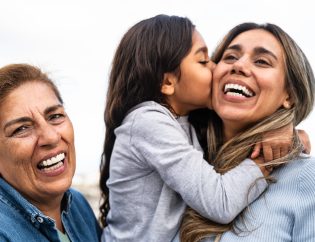
September is National Recovery Month, a time to honor the strength it takes to heal and to celebrate the possibilities that come with a new chapter of life. Life after recovery isn’t just about staying sober; it’s about rediscovering joy, building purpose, and finding healthy ways to thrive.
From hobbies that spark natural dopamine release to volunteering and giving back, there are countless ways to reconnect with yourself and others. In this post, we’ll explore how to set meaningful goals, embrace pleasure without fear, and get involved in your community—because recovery isn’t the end of the story, it’s the beginning of a brighter one.
Overcoming the Fear of Joy in Life After Recovery
For many people, life after recovery can feel uncertain when it comes to pleasure and joy. Trauma and addiction often create a complicated relationship with happiness. You may question whether you deserve it or fear that enjoying yourself could lead back to old habits. This hesitation is common, and it doesn’t mean you’re doing recovery “wrong.” It means your brain and body are learning how to experience joy in a safe, healthy way.
The good news is that joy isn’t dangerous—it’s part of healing. Finding pleasure in small, everyday things can actually strengthen your recovery. Activities like laughing with friends, trying a new hobby, or even enjoying a favorite meal can help rewire your brain to trust positive experiences again. The key is to give yourself permission to feel good without guilt. Joy isn’t a threat to your progress; it’s a sign that you’re reclaiming the fullness of life after recovery.
Practical Goal-Setting Exercises for Life After Recovery
One of the most empowering aspects of life after recovery is setting goals that propel you forward with purpose. Setting realistic, achievable goals can help you rebuild confidence, celebrate progress, and stay focused on the future you want. Here are a few simple exercises to try:
- The One-Week Goal: Choose one small, specific goal you can accomplish in the next seven days, like cooking three healthy meals or attending one support group meeting.
- Three Wins a Day: At the end of each day, write down three things you accomplished, no matter how small. For example: took a 10-minute walk outside instead of scrolling on your phone, reached out to a friend and had a positive conversation, or finished a chore you’d been putting off. This builds momentum and positivity.
- Vision Board: Collect images, quotes, or words that represent the life you want to build after recovery, and place them somewhere you’ll see daily.
- SMART Goals Check-In: Write one long-term goal and break it down into smaller, measurable steps that you can track over time. For example, instead of saying “I want to exercise more,” set a SMART goal like, “I will walk for 20 minutes, three times a week, for the next month.”
- Future Letter: Write a letter to yourself one year from now, describing where you are, what you’ve achieved, and how you feel about your progress.
Fun Activities That Boost Life After Recovery
Part of embracing life after recovery is finding ways to naturally lift your mood and spark feelings of happiness. Engaging in activities that release dopamine, the brain’s “feel-good” chemical, can help you reconnect with joy, reduce stress, and strengthen your recovery. Here’s a wide range of ideas to try, so you can discover what truly makes you feel alive and fulfilled:
- Going for a brisk walk in nature or a light jog
- Dancing to your favorite music
- Practicing yoga or stretching exercises
- Trying a new recipe or cooking a creative meal
- Gardening or caring for plants
- Painting, drawing, or coloring
- Listening to uplifting music or singing along
- Writing in a journal or starting a gratitude log
- Playing a musical instrument
- Meditating or practicing mindfulness
- Taking a warm bath or shower with aromatherapy
- Doing a DIY project or crafting
- Engaging in photography or creating a photo album
- Volunteering locally or helping a neighbor
- Reading an inspiring book
- Playing a game or solving puzzles
- Going for a bike ride
- Exploring a new hiking trail or park
- Attending a local class, workshop, or community event
These activities don’t just feel good in the moment; they help your brain relearn how to enjoy life safely and positively. The more you experiment and notice what sparks joy, the more confident you’ll feel embracing life after recovery.
Healthy Hobbies to Explore in Life After Recovery
Life after recovery is the perfect time to explore new interests and hobbies that nourish your mind, body, and spirit. Engaging in activities that challenge you, spark creativity, or foster connection can help you feel fulfilled and purposeful. Here are some ideas to get started:
- Knitting, crocheting, or sewing
- Woodworking or carpentry projects
- Joining a community theater or improv group
- Birdwatching or nature journaling
- Pottery, ceramics, or sculpting
- Learning calligraphy or hand lettering
- Stargazing or astronomy clubs
- Archery, rock climbing, or other adventure sports
- Martial arts or self-defense classes
- Scrapbooking or creating memory books
- Participating in local history or museum groups
- Exploring meditation retreats or wellness workshops
- Volunteering to teach or mentor others
- Collecting and curating art, stamps, or other collectibles
Trying out a variety of hobbies helps you discover what truly resonates with you. These activities offer meaningful ways to spend your time, strengthen your sense of identity, and support your life journey after recovery.
Volunteering and Giving Back in Life After Recovery
One of the most powerful ways to find purpose and joy in life after recovery is through volunteering and giving back to others. Helping others not only makes a positive impact on your community, but it also boosts your self-esteem, strengthens connections, and reinforces a sense of meaning. Whether you choose to volunteer locally or support a cause online, there are countless ways to make a difference while nurturing your own recovery journey.
Some ways to get involved include:
- Assisting at a local food bank or shelter
- Mentoring someone in recovery or offering peer support
- Participating in community clean-up projects
- Teaching a skill or hobby to children or adults
- Donating time to environmental or animal welfare organizations
- Organizing a fundraising event for a cause you care about
- Joining local advocacy or civic groups
Giving back allows you to see the tangible effects of your contributions and creates opportunities for meaningful connections. By helping others, you also strengthen your own sense of purpose and joy, reinforcing the positive momentum of life after recovery.
Embracing Life After Recovery
National Recovery Month serves as a reminder that healing is a journey worth celebrating, and that life after recovery holds the promise of joy, purpose, and meaningful connections. Rediscovering your passions, exploring healthy hobbies, setting meaningful goals, and giving back to your community are all ways to fully embrace this new chapter.
For women navigating substance abuse, having the right support can make all the difference. Twin Branch Wellness & Recovery for Women provides compassionate care, evidence-based programs, and a supportive community to help women build the skills, confidence, and resilience needed to thrive in life after recovery. No one has to face this journey alone. Recovery is possible, and joy is waiting on the other side.











